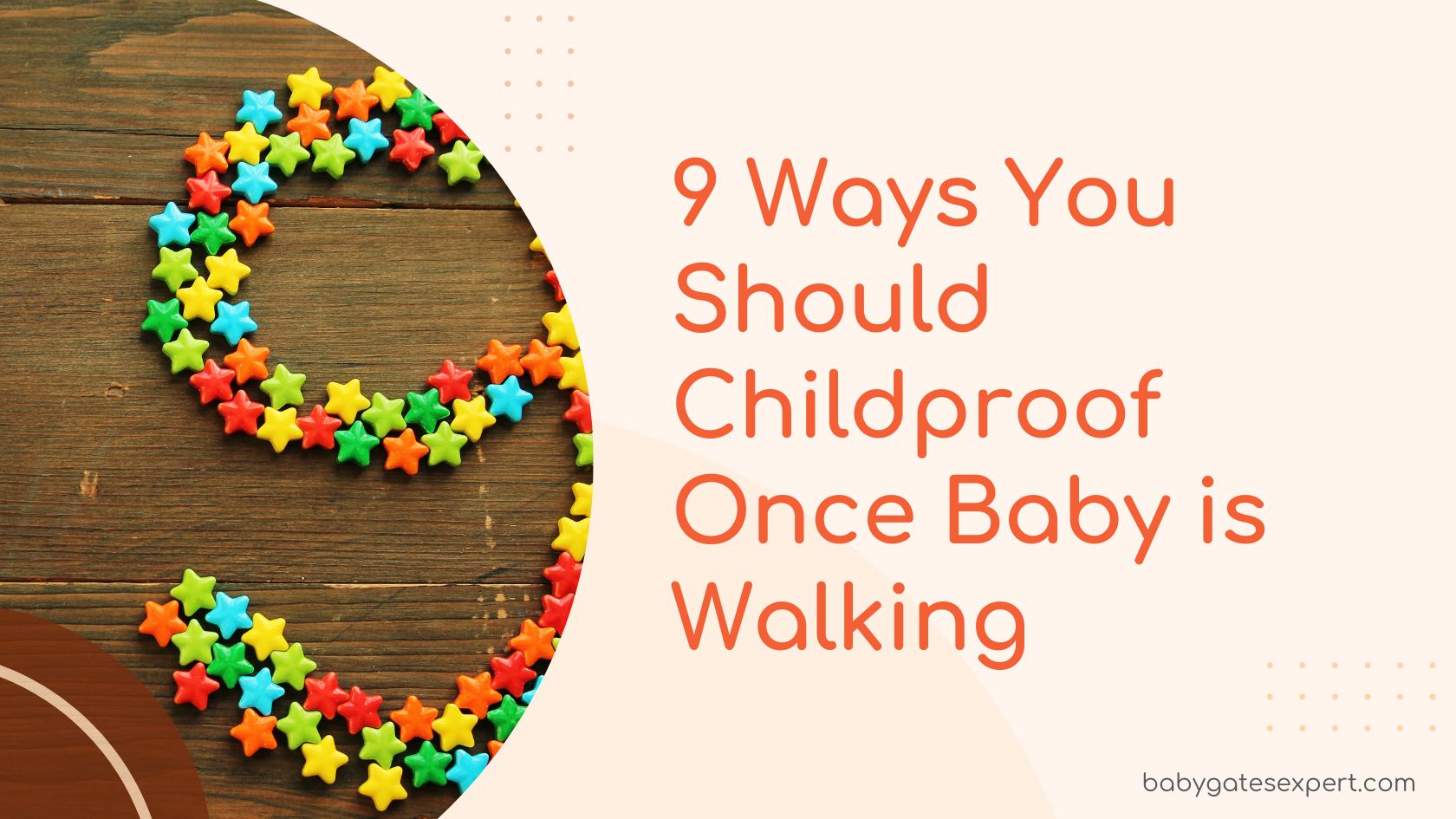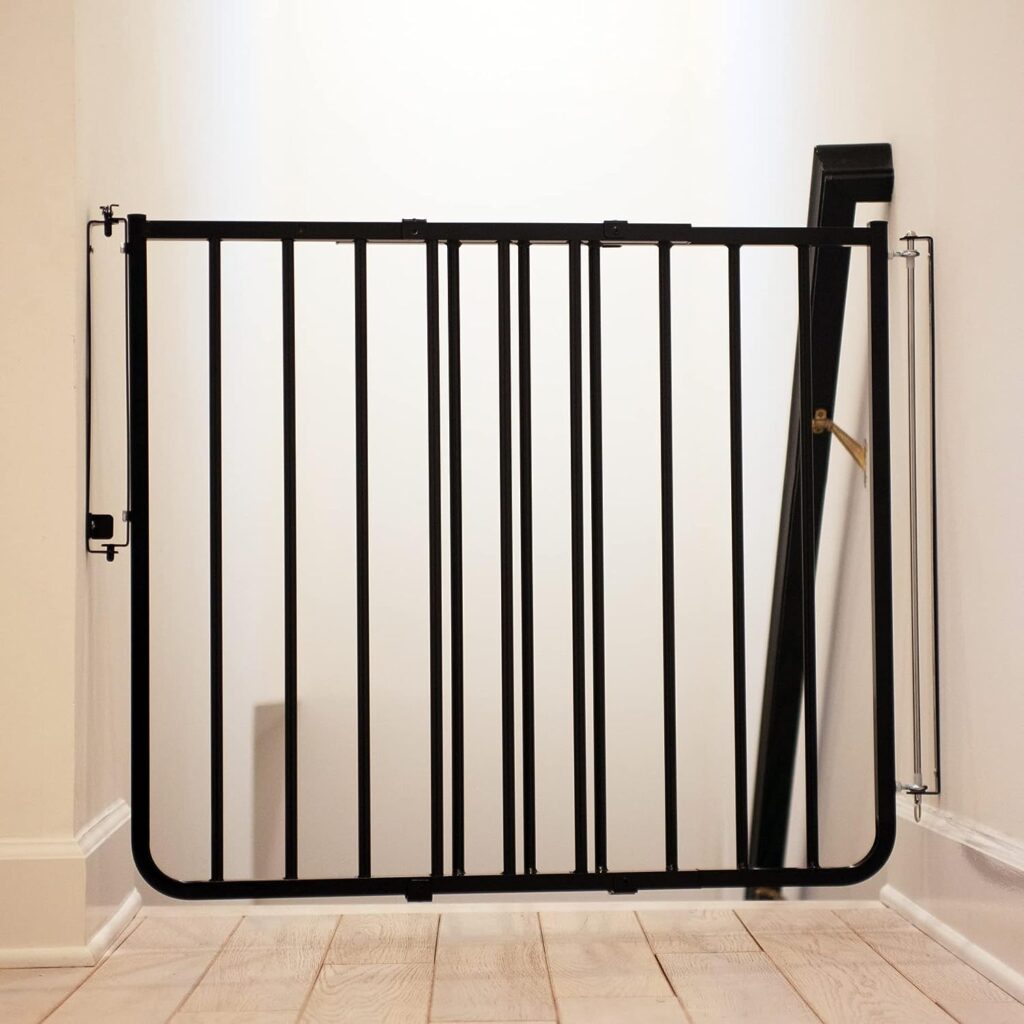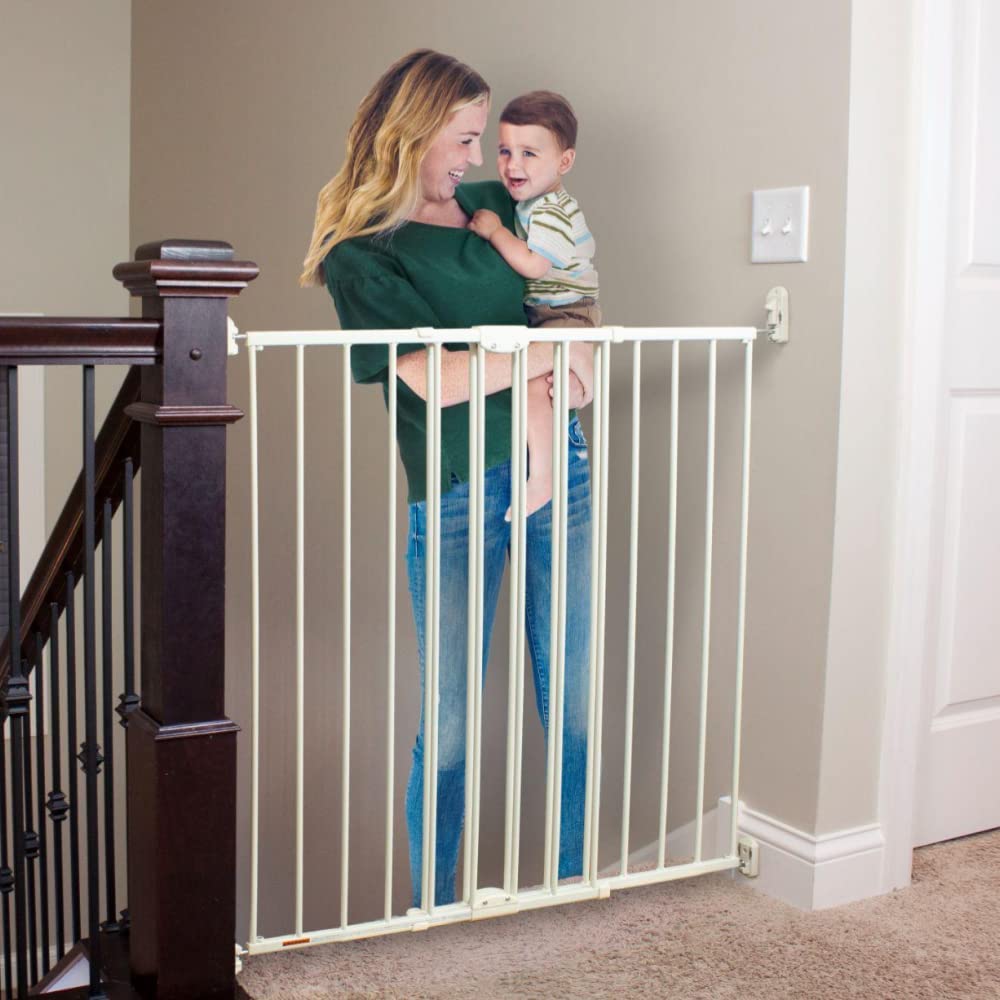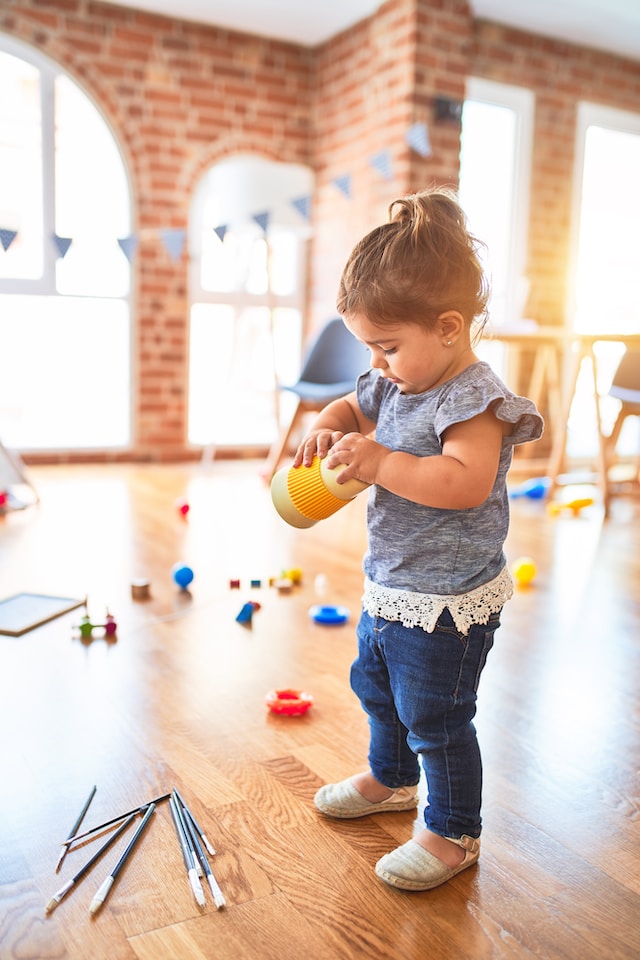Are you looking for ways you can childproof your home once your baby is walking?
Are you a parent of a little one that is making that big transition from crawling baby to toddlerhood?
This is such a great milestone and it is so fun to watch your child master their first few wobbly steps! But with this wonderful moment comes new challenges for making sure that your home is safe your little wanderer.
Here are 9 tips to help guide you through YOUR first steps of keeping your toddler safe!
Tip #1: Install Cabinet Door and Drawer Locks
Once your tyke is toddling chances are they are going to be heading straight for your cabinets and drawers to see what they can find inside! Whether you have items stored inside that can harm them (think chemicals or knives, etc.), be harmed BY them (kids can be very destructive!), or simply want to avoid a massive mess, make sure you’ve properly installed whatever locks works best to keep them out.
Tip #2: Install Baby Gates
First and foremost, make sure that if your home has a stairway that you have installed proper baby gates at the top and bottom of the steps. For the top of the stairs, you will need a permanently-mounted gate, but for other areas a pressure-mount type is sufficient. Baby gates around the house are great for blocking off no-no areas that present particular hazards that aren’t easy to baby-proof. They can be used to either keep your toddler in or out of a room or area so that you can control what areas they have access to.
Tip #3: Make Doors and Door Knobs Inaccessible
Whether you need to keep your child from entering certain rooms or need to block them from going outside, you will likely need to invest in some kind of “door” deterrent. The simplest method is to simply use a plastic door knob cover that is designed to keep their hands from gripping and turning the knob. However, it is possible that you may need to use special locks that are placed up high or even employ the use of a door alarm if you have a child that is good at escaping.
Tip #4: Replace Dangerous Window Blinds
Venetian-type blinds are often made with cords that allow you to adjust them up or down. These are terrible hazards to little children and pose a strangulation threat. It is important to remove the blinds or cords completely and not rely on simply tying them up. Children who can stand, walk, and climb can reach higher than you might think or someone may inadvertently untie them, not thinking about the risk.
Tip #5: Protect against Electrocution
In modern-day homes, electricity is a real threat to little children. Outlets and electric cords are everywhere! Make sure that you carefully search out all of these hazards and take steps to help eliminate any problem areas. Install outlet covers that your child is unable to tamper with and tuck away any cords completely out of reach. If a child can reach a cord, they may pull on it, bite on it, trip over it, or even use it to pull down the item on top of themselves. Reduce that risk!
Tip #6: Remove Button Batteries & Small Magnets
These items are super common in most households, but can be downright deadly! We all know that babies and toddlers are notorious for putting small objects in their mouths. Not only are these choke hazards, but if swallowed are extremely dangerous. If you own anything that contains these items, consider removing them from your home, or alternatively store them in a locked cabinet up high until your child is past the age/stage of risk.
Tip #7: Anchor Large Furniture
Toddlers not only can walk but eventually, they learn to climb, too. I cannot emphasize enough how important it is to use furniture anchor straps to secure large, tall, or heavy furnishings to a stud in the wall behind it. This includes items such as dressers, bookshelves, entertainment centers, dining hutches, etc… One of the scariest things imaginable is having a heavy piece of furniture fall on a child. Don’t let this happen in your home!
Tip #8: Use Bumper Pads
A wobbly toddler or a walker learning to run can easily get hurt if they are unsteady or trip on items. Do your best to keep their walkways clear of debris (toys, shoes, etc.) and use padding in places they might fall. A bumper pad on the edges and corners of tables, hearths, or other similar areas will help them avoid bumps and bruises. A carpeted room will also provide more protection, though a shaggy rug may not be easy for an early walker to learn on.
Tip #9: Think Water Safety
Toddlers are naturally drawn to water, which means that you must be diligent to keep them safely monitored. Don’t leave water in bathtubs after baths or leave items to soak in the sink when you aren’t in the room. Use a toilet seat lock. And make sure your washing machine is completely off-limits. A young child can drown in as little as 1” of water! Plus, make sure that your hot water heater is not set too high in order to avoid burns, in case they find themselves at a faucet.
So there you have my top 9 ways to childproof your home once your child has mastered the art of walking! They will be fast and full of energy, as well as curious as a kitten! It will take a lot of diligence on your part to stay one step ahead, so don’t feel bad about using whatever safety products are available to make your job just a little bit easier!









